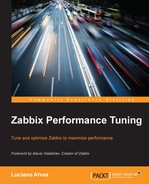Once, I read a book called The Outliers by Malcolm Gladwell. In this book, the author talks about the circumstances that lead people to get certain results in their areas of expertise, whatever they may be—music, sports, math, physics, and so on. The key aim of the author is to assert, based on facts and data, that there aren't people with extraordinary qualities, but the result depends on the effort, time, and energy devoted to that activity. The opportunity to stand out comes when we are in the right place at the right time. There is a popular saying, "Luck is what happens when capacity/competency and opportunity meet." I think Alexei Vladishev was lucky.
When I met Alexei in 2008, I was surprised by his simplicity and mild nature at the places where he worked, whether it was a training session, a lecture in an auditorium, a meeting with the client, or anything else. He's one of those guys who have in themselves a great guiding force for their actions and decisions, and who don't accept the label of a "pop star" in the open source world. In one of our conversations, he told me about one of the reasons for devoting his professional life to Zabbix SIA and his time to the development of Zabbix—improving people's lives. Simple, and without any "mega" aspiration! He only wanted to help people get their work done better. From this originate his other decisions regarding Zabbix; for example, there is no paid professional or enterprise version.
When I was invited to write this book, I thought about the points I have just described. I thought that it would be a great opportunity to bring to a greater number of people the knowledge that I had gained over the years working with Zabbix in large companies. It would also be a way to give to this field something in return for what I had obtained from it over the years. I hope this book will help you take full advantage of Zabbix, and may it contribute to the goal Alexei had—that of Zabbix being a tool for improving people's lives.
Chapter 1, Evolution of Zabbix, explains that the start with Zabbix is not always glamorous as it does not always have the most advanced features. If you're experiencing performance issues with Zabbix, it is likely that you can solve them without new hardware or software.
Chapter 2, Zabbix and I – Almost Heroes, talks about how Zabbix has evolved due to performance issues in each version. We need to look out for the new features. In this chapter, we also talk about the importance of Zabbix, which grows as the other teams and areas of companies become aware of the potential of this tool.
Chapter 3, Tuning the Zabbix Server, tells you a little more about the possibilities and needs for adjustments to the Zabbix server. It is important to realize that many performance problems can be solved by adjusting the Zabbix server's settings.
Chapter 4, Tuning the MySQL Database, talks about the motivations behind choosing MySQL as the database for Zabbix, and the main MySQL settings related to the performance of Zabbix. In this chapter, you understand a few things about MySQL's behavior with Zabbix.
Chapter 5, Tuning the Frontend, teaches you how to speed up the delivery of Zabbix data to users and improve their experience with the frontend. Nowadays, we can choose from new web servers. Apache is not the sole alternative, nor is it the "killer one."
Chapter 6, Adjusting the Storage, mentions what we must take into account when we think of the hardware, especially the storage to use with Zabbix. To get the best performance from Zabbix, we need to understand how information flows into it and adjust the settings to control the flow of data (reading and writing).
Chapter 7, Tuning the Operating System, considers the fact that the operating system is an important part in this control flow process. We should make sure that we search in our Linux distribution to find the best practices for performance, always taking into account the component that the operating system is involved with (the Zabbix proxy, Zabbix GUI, Zabbix server, or Zabbix database).
Chapter 8, Doing the Extra Work, informs you that it is possible to target the components of Zabbix (the Zabbix server, GUI, and database) on different pieces of hardware. It will also become clear to you that the great hardware consumer is the Zabbix database, and it is this component that must be given the best hardware.
Chapter 9, Using the Zabbix Proxy, proves that the Zabbix proxy can be a powerful ally of the Zabbix server for improving environmental performance. It is good practice to start the environment by already considering a Zabbix proxy, even if it is on the same network in which we have the Zabbix server.
Chapter 10, Monitoring the Health of Zabbix, asserts that Zabbix's internal metrics are an important part of performance tuning. These metrics can't be evaluated alone. We need to understand that they could be affected by other factors, such as the Zabbix database settings.
Chapter 11, The Next Challenge, puts forward a challenge: understanding where and how Zabbix can support the company's business. We should not think of this powerful tool as only something to be used to monitor the IT infrastructure.
The online chapter, Performance Features and Improvements since Zabbix 1.8, provides some information about the new features and improvements related to performance since Zabbix 1.8. The chapter is only available online at https://www.packtpub.com/sites/default/files/downloads/B03410_Appendix.pdf.
